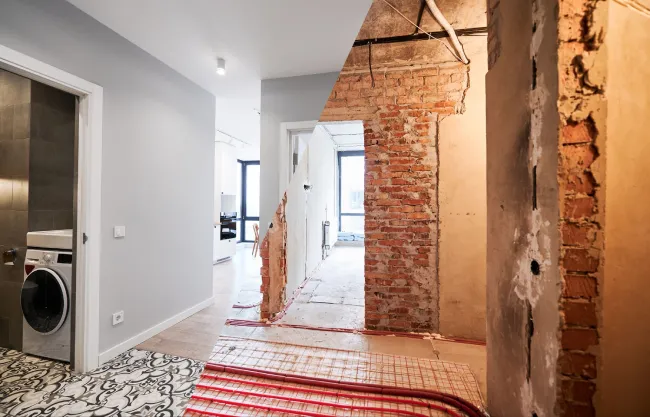Traditional real estate loans are a type of long term financing. The term length often spans from 15 to 30 years, depending on the property type and other factors. Setting up a long-term loan often takes weeks or longer, and both the property and applicant must comply with the lender’s strict guidelines and requirements. While this suffices in many situations, there are instances when a short-term loan is needed to bridge the gap until permanent financing is in place. Bridge loans fill this critical need for real estate investors and developers.
What Is a Bridge Loan?
A bridge loan is a short term loan, typically spanning between six months and two years. Often real estate buyers use equity in an existing property to make their next investment. However, lining up the sale of one property with the purchase of another is challenging. A bridge loan can use the real estate owned as collateral so that a buyer can finalize their new purchase as soon as possible. They directly bridge the gap between the two real estate closings, providing flexibility to the timeline. Some bridge loan lenders will agree to no payments throughout the length of the loan, but interest charges are due when the loan is paid off. Other lenders require interest-only or fixed payments.
How Does a Bridge Loan Work?
When selling real estate that you currently own, you may expect to receive a lump sum of cash from the sale equity at the closing table. Often, at least some of this equity may be applied toward the down payment of a new investment. Unfortunately, this equity is not accessible until the property’s sale is finalized. Some people use a line of credit or take out a second lien to tap into their equity before the sale is finalized. However, setting up such financing is a lengthy, cumbersome process.
With bridge financing, you have access to the real estate equity in the for-sale property without the need for a comprehensive, complicated loan process. Your new loan could replace the existing mortgage, or it could be a second lien. Generally, the total loan-to-value for bridge finance is capped at 75 to 80%. Bridge financing closing costs and the time to close vary slightly by lender.
When Does Bridge Financing Make Sense?
There are several scenarios that this short-term financing is most commonly used in. For buyers who need to use their real estate equity for a down payment and do not have time to wait for the property to sell, bridge financing can provide a lump sum of cash from the property’s equity.
Bridge financing is also commonly used for fixer-uppers. Traditional mortgage guidelines often have significant standards for the condition of the property, so you may not qualify for this type of loan until after significant repairs are made. Bridge financing can be used to buy the property, giving you several months to complete repairs and renovations. When using bridge financing for this purpose, ensure that you have enough money and time available to make the necessary repairs that a traditional lender requires.
Some investors purchase fix-and-flip properties with bridge financing. One reason for this is because these loans can often close more quickly than traditional loans can. In addition, some types of bridge financing may offer funds for the property purchase as well as the renovation costs.
Pros and Cons of Bridge Loans
Bridge financing has both pros and cons to consider before deciding if this is the right option for your needs. Some of the pros include:
- A faster closing
- The potential for interest-only or no payments
- The ability to get a lump sum of cash before selling the property
- The ability to choose between a new first mortgage or a second mortgage that keeps your current loan in place
- Your offer to buy the new property may not require a contingency
The downsides to bridge financing include:
- A maximum loan-to-value of 75 to 80%
- Higher interest rates
- A possible prepayment penalty
- Closing costs that may be up to 3% of the loan amount
- The possibility making two or three mortgage payments for a short time period
- Both properties are at risk of foreclosure in the event of a default
If you decide that the cons are too significant for your unique situation, there are other options to consider. For example, you can go through the process of getting a cash-out refinance loan or applying for an equity loan or line of credit.
Four Types to Consider
To better understand what bridge financing is and decide if it is the right solution for your situation, a closer look at the four types of bridge loans is in order.
Open Loans
This type of bridge financing does not have a fixed payoff date when the loan is set up. In exchange for the risk that the lender takes in extending an open loan, it usually subtracts the loan’s interest from the lump sum advance. These loans usually have a higher interest rate.
Closed Loans
A closed loan has a fixed payoff date, so it is preferential to lenders. This is because there is no uncertainty to the lender about when the loan will be paid in full. As a result, the lender may extend a lower interest rate compared to open loans.
First Position Loans
A first position loan puts the lender in the first position. In the event of a default, the property’s sale proceeds will be applied to the senior lien. This debt will be paid in full before others with a claim are repaid. This dramatically reduces the risk of significant financial loss to the lender in the event of a default. Because of this, first position loans usually come with a lower interest rate.
Second Position Loans
With a second position loan, the lender only can recoup its funds after the first lien has been paid in full. In some cases, the property sale proceeds do not fully cover the first lien and the second lien. As a result, second position loans are riskier to the lender. These loans often have a maximum term length of 12 months or less, and they have higher interest rates than first position loans.
How to Get Bridge Financing
1. Calculate your property’s equity. This is a major factor that determines if bridge financing is available to you.
2. Review your credit report and overall financial strength. Bridge financing has higher interest rates than traditional mortgages. Applicants with higher credit scores usually qualify for better interest rates. However, some lenders accept applicants with a credit score down to 660.
3. Determine your exit strategy. When analyzing your investment, you need to determine how you intend to repay the loan. Some people may hold on for a short period of time and sell for a small profit, while others may decide to hold the property as a long term investment, in which case they would refinance into a long term loan.
Why Choose Macoy Capital for Your Bridge Financing
Macoy Capital is a trusted lending company that offers fast, flexible options that satisfy the needs of investors and developers. We specialize in providing high leverage financing. More than that, we take pride in maintaining excellent communication with our borrowers from start to finish while holding the highest standards for integrity and transparency. With our streamlined loan process, we pave the way for a smoother, faster closing. To learn more about how we can help you achieve your goals, contact Macoy Capital today.










